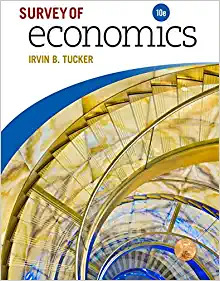Question
Consider a Spence signaling model of a competitive labor market, in which rms can observe workerseducation levels, but not their productivities, when they decide which
Consider a Spence signaling model of a competitive labor market, in which rms can observe workerseducation levels, but not their productivities, when they decide which workers to hire, and workers, who know their own productivities, choose their education levels with rational expectations about how education will inuence rmsbeliefs about their productivities. Assume that the output of a worker of typewho has hadeyears of education is. The utility of a worker of typeis given byu(w;e;) =wc(e;)wherewis the wage andc(e;)is the cost ofeyears of education to a worker of type. Letc(e;) =ke, withk >0. Consider that there is continuum of types2[L;H]and types are uniformly distributed in the interval[1;2]:Letw(e)be the wage oered in equilibrium to a worker witheyears of education. Assume thatw(e)is dierentiable.
c) Briey explain why, in a separating equilibrium (that is, an equilibrium in which workers of dierent types always choose dierent education levels), the wage oered a worker witheyears of education equals the output of the type of worker who chooses that level of education.
Assume from now on that, in a separating equilibrium, the lowest type gets no education, i.e.,e(L) =e(1) = 0:
d) Using your answers to b) and c), show that the equation that describes the equilibrium relationship between a workers chosen level of education and his
2k2k
e) Derive an equation that describes the equilibrium relationship between a
workers wage and his chosen level of education, i.e.,w(e()).
Step by Step Solution
There are 3 Steps involved in it
Step: 1

Get Instant Access to Expert-Tailored Solutions
See step-by-step solutions with expert insights and AI powered tools for academic success
Step: 2

Step: 3

Ace Your Homework with AI
Get the answers you need in no time with our AI-driven, step-by-step assistance
Get Started


